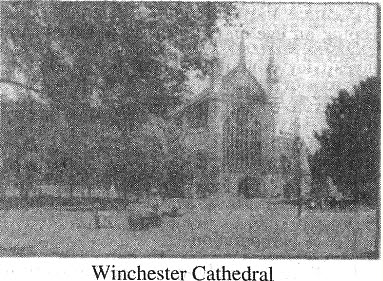


An Important English Town
The site of the town of Winchester was a natural place for a settlement at the point where a river cut through the chalk of the southern hillsides. A camp at St Catherine’s Hill was the (1) ear known use of the site. This was followed by an Iron Age hill-fort, but this was left uninhabited by 100 BC. It was the Romans who finally established the town and sur (2) it with a defensive wall for the protection of their people and trade.
With the bu (3) of its first cathedral in the sh century, the town became an important religious centre. Later, King Alfred, who had suc (4) pushed back the invading Danes, moved his palace to Winchester. The town then experienced rapid dev (5) and its central role in English history was underlined in 1066, when the conquering Normans, under King Alfred the great, made Winchester their capital.

The site of the town of Winchester was a natural place for a settlement at the point where a river cut through the chalk of the southern hillsides. A camp at St Catherine’s Hill was the (1) ear known use of the site. This was followed by an Iron Age hill-fort, but this was left uninhabited by 100 BC. It was the Romans who finally established the town and sur (2) it with a defensive wall for the protection of their people and trade.
With the bu (3) of its first cathedral in the sh century, the town became an important religious centre. Later, King Alfred, who had suc (4) pushed back the invading Danes, moved his palace to Winchester. The town then experienced rapid dev (5) and its central role in English history was underlined in 1066, when the conquering Normans, under King Alfred the great, made Winchester their capital.


 分享
分享
 反馈
反馈 收藏
收藏 举报
举报







 复制链接
复制链接 新浪微博
新浪微博 分享QQ
分享QQ 微信扫一扫
微信扫一扫





